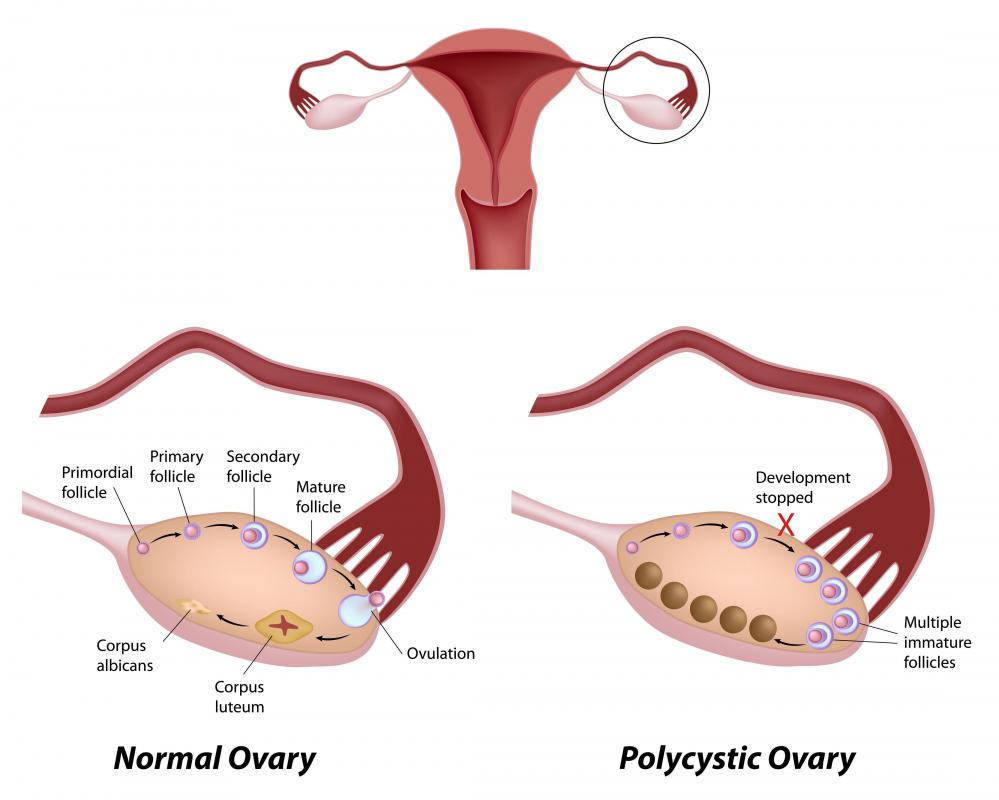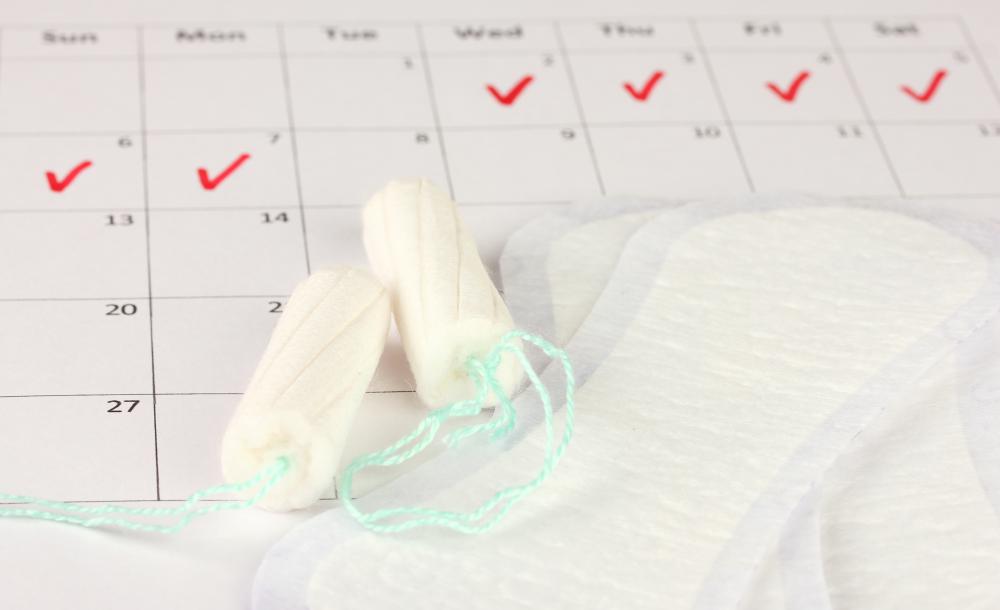At TheHealthBoard, we're committed to delivering accurate, trustworthy information. Our expert-authored content is rigorously fact-checked and sourced from credible authorities. Discover how we uphold the highest standards in providing you with reliable knowledge.
What are the Symptoms of Polycystic Ovarian Syndrome?
Polycystic ovarian syndrome is a common condition among women between the ages of 15 and 40. It occurs when hormonal imbalances, high insulin levels, or another problem affects egg production in the ovaries and leads to the development of multiple cysts or abscesses in the organs. Symptoms can vary widely between different women, but the most common symptoms of polycystic ovarian syndrome are irregular periods, weight gain, and infertility. Depending on the underlying causes, a woman may also experience excess body hair growth, high blood pressure, and liver problems. Most patients are able to manage the symptoms of polycystic ovarian syndrome by taking medications and making smart lifestyle choices.
Menstrual period abnormalities are usually the easiest symptoms of polycystic ovarian syndrome to identify. Many women with the condition have longer than average menstrual cycles, going at least 35 to 40 days between periods. Some patients only have a few periods a year, and a few stop menstruating altogether for months or years at a time. When periods do occur, they may be either very light or very heavy. Since egg production is affected, many women are left infertile.

Women who have polycystic ovarian syndrome typically have elevated levels of androgen and other male hormones. As a result, a woman can experience unusual and rapid hair growth patterns on the face and body. In addition, male-pattern baldness and a decrease in breast size are symptoms of polycystic ovarian syndrome in some patients. Some women experience significant weight gain and persistent, severe acne on their faces and chests.

Other symptoms of polycystic ovarian syndrome may include sleep apnea, diabetes, high blood pressure, and high cholesterol levels. Such symptoms are usually considered complications of weight gain and obesity related to the underlying disorder. Cholesterol and blood pressure issues can potentially lead to coronary artery disease, heart attacks, or strokes regardless of the age of the patient.

A woman who experiences symptoms of polycystic ovarian syndrome should consult with her doctor to learn about different treatment options. A specialist can evaluate physical symptoms and perform blood and urine tests to check for hormone imbalances. Diagnostic imaging tests are used to examine the ovaries.
Medical care is geared toward alleviating specific symptoms. Acne medications and hair removing creams are frequently prescribed to improve a woman's physical appearance, and birth control pills can help regulate periods. Hormone therapy, a specialized diet, and regular exercise are important to control weight and reduce the risk of heart problems. Infertility is not always curable, but a patient can elect to undergo a surgical procedure to remove cysts and improve her chances of getting pregnant.
AS FEATURED ON:
AS FEATURED ON:

















Discuss this Article
Post your comments